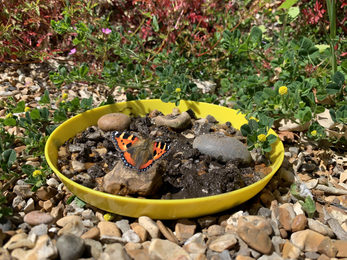We've already had an intense experience of the heat and drought forecast for 2025. The national news reported that another “hotter-than-normal” summer was on its way. That means it’s an important time to consider how we can support wildlife with water on both a local and landscape-scale.
Just as people in the UK are not used to sweltering temperatures, our native animals and plants are not adapted to cope with extreme heat or prolonged spells of dry weather. Taking a few small steps at home can save wild lives in the short term.
Providing water for wildlife can be as simple as 1, 2, 3:
- Fill a shallow dish of water with some small stones to help birds, mammals and insects. Keep checking it daily and remember nocturnal animals will need it too.
- Make a butterfly puddler - a dish filled with sand, compost or manure that’s kept moist with rocks as resting spots. This provides butterflies with somewhere to drink and absorb much-needed minerals and salts.
- Keep ponds and bird baths topped up to provide shelter for amphibians and help birds to bathe and remove parasites to keep feathers in good condition. Ponds are happiest with rainwater but tap water, left in a bucket for 24 hours for chlorine to dissipate, can be used if necessary.





